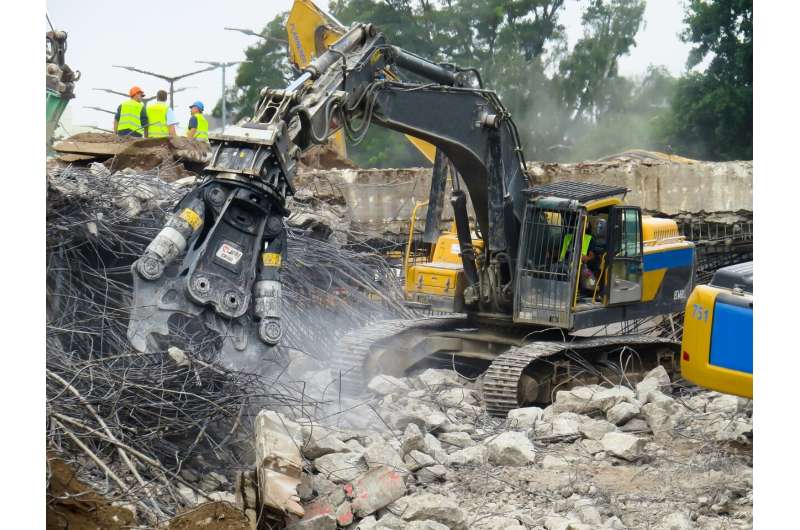This article has been reviewed according to Science X's editorial process and policies. Editors have highlighted the following attributes while ensuring the content's credibility:
fact-checked
trusted source
proofread
New report highlights economic earthquake risk in the United States

Earthquakes cost the nation an estimated $14.7 billion annually in building damage and associated losses according to a new report released jointly today by the U.S. Geological Survey and the Federal Emergency Management Agency at the annual Seismological Society of America meeting.
The new estimate is twice that of previous annual estimates due to increased building value and the fact that the report incorporates the latest hazards as well as improvements to building inventories.
Earthquake losses from the last few decades in the U.S. have ranged about $1.5-$3 billion per year depending upon the timeframe. While less than the figures suggested by long-term loss estimates from this study, a single large earthquake impacting a populated urban area would quickly make up the difference in losses in one fell swoop.
"It is fitting that this report was released on the same date as the Great 1906 San Francisco Earthquake," said David Applegate, USGS Director. "It's a sobering reminder about why we need to prepare for those rare but large earthquakes, as just one major event can eclipse the costs of the more frequent but smaller ones."
Compared to previous estimates in 2001, 2008, and 2017, the annualized earthquake loss ratios have consistently decreased throughout the western U.S., indicating that the work being done to reduce building vulnerability has proven successful. Although new construction benefits from modern seismic codes and the latest science and earthquake-engineering research, vulnerable older buildings continue to bear much of the underlying risk seen in the loss estimates.
"The overall earthquake risk continues to outpace the seismic mitigation efforts in our country," said Kishor Jaiswal, USGS research civil engineer. "In addition to better new buildings, further attention could be given to improving earthquake-hazard and risk research targeted at identifying and cost-effectively retrofitting existing vulnerable structures."
Understanding how much earthquakes could cost the U.S. is a priority of the National Earthquake Hazards Reduction Program and is critical for informing decisions about mitigation policies, priorities, strategies and funding. USGS science on earthquake hazards and FEMA's latest Hazus 6.0 loss-estimation software release were critical components of this analysis.
"This study reinforces the nation's need to be proactive about making communities safer from threats like earthquakes," said FEMA Deputy Administrator Erik Hooks. "This includes adopting the latest seismic building codes and investing in earthquake resilience projects. FEMA remains committed to supporting communities across the nation through our various programs to reduce vulnerability not just to earthquakes but all natural hazards."
Even though most of the economic losses are concentrated in California and along the West Coast due to that region's high seismic hazard levels, significant population, and building exposure, earthquake risk is spread throughout the country. For example, there is a combined $3.1 billion per year in projected losses across the central U.S., Rocky Mountain region, Alaska, Hawaii, Puerto Rico and the Virgin Islands.
This reinforces the fact that earthquakes are a national problem.
Annualized loss—the metric that seismologists used in the report—is derived from combining earthquake hazards, building exposure, and vulnerability, and thus it represents a long-term average. The Annualized Earthquake Loss Ratio expresses the estimated annualized loss as a fraction of the building-inventory replacement value.
More information: Report: www.fema.gov/sites/default/fil … es-united-states.pdf
Provided by Seismological Society of America




















